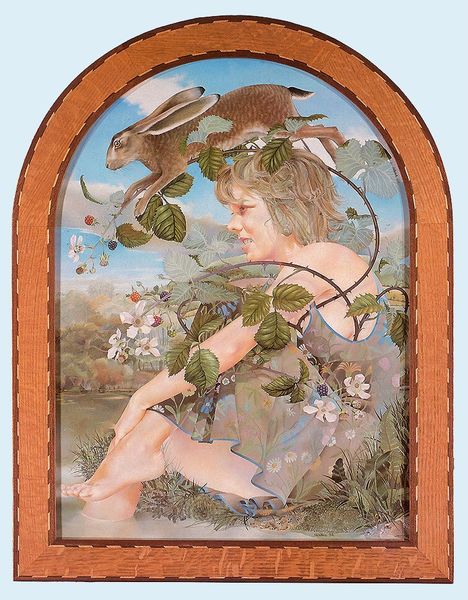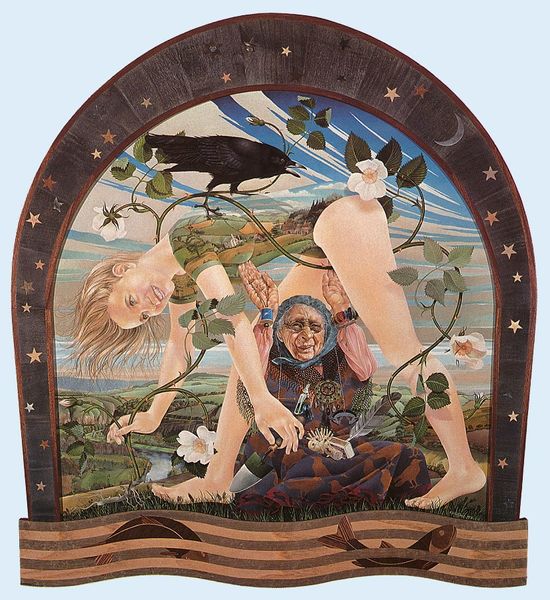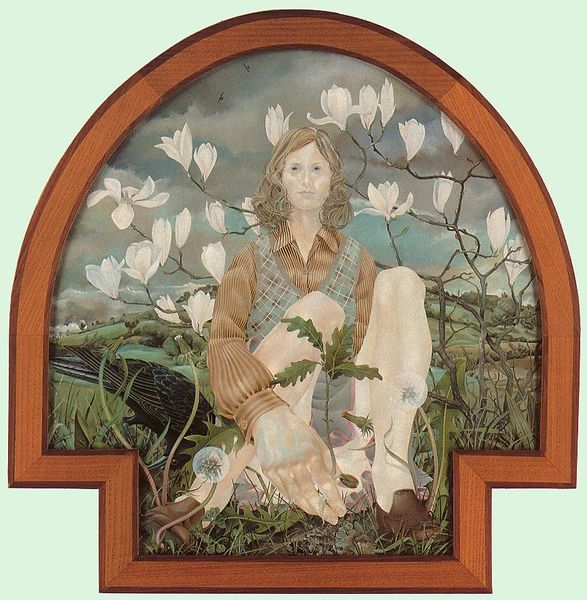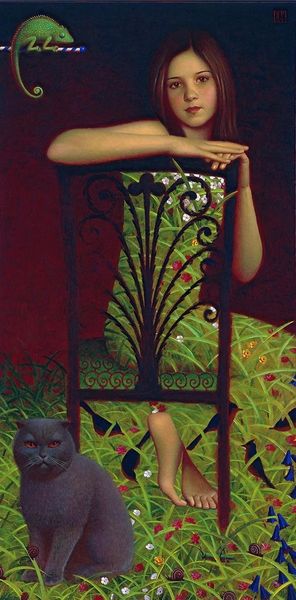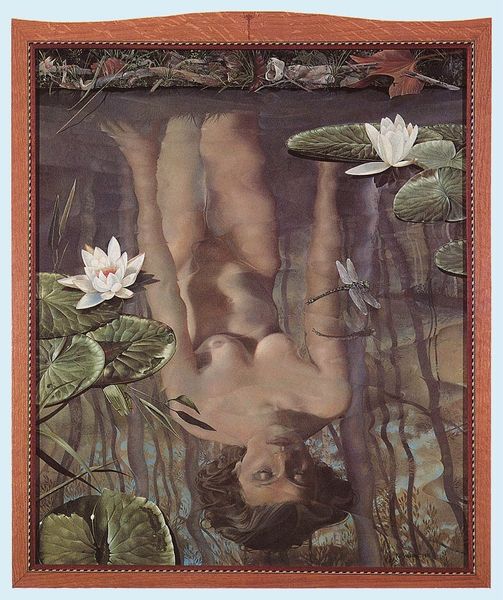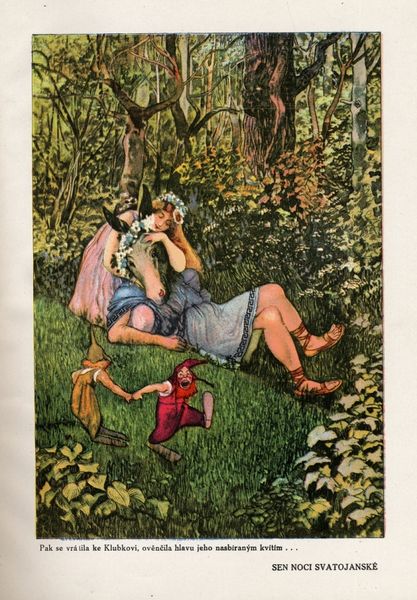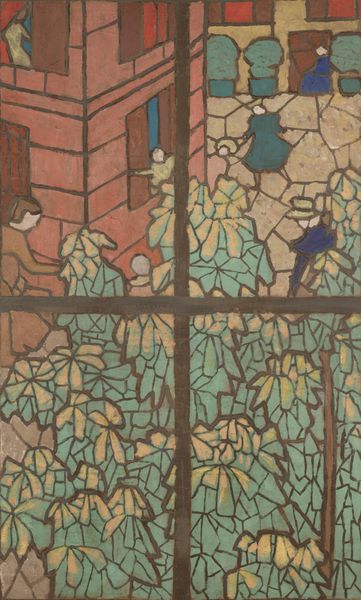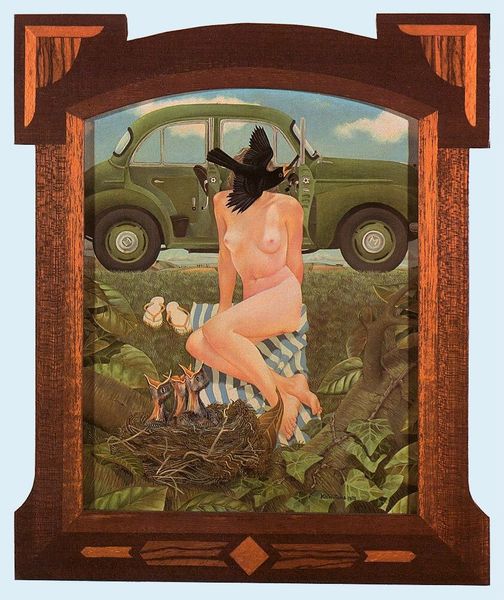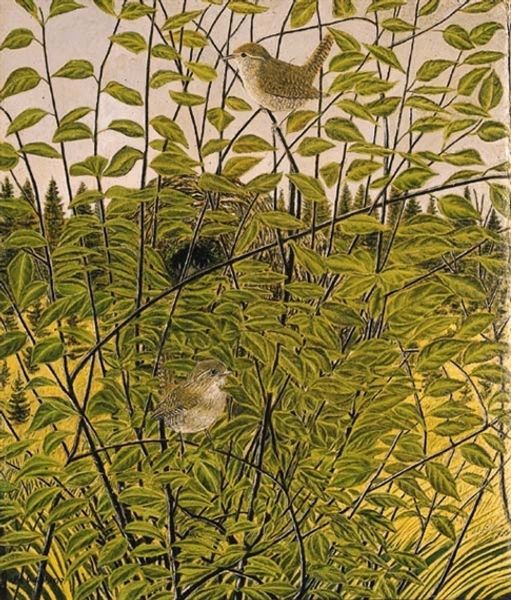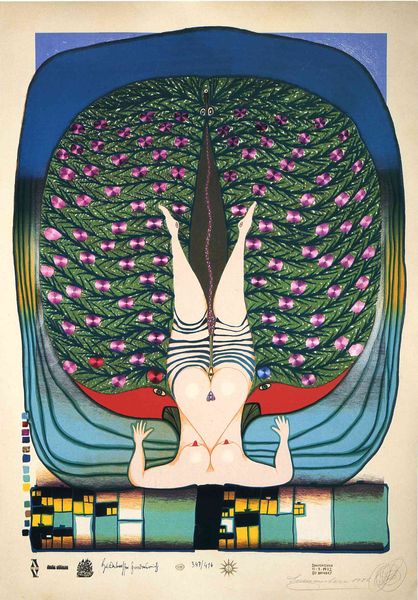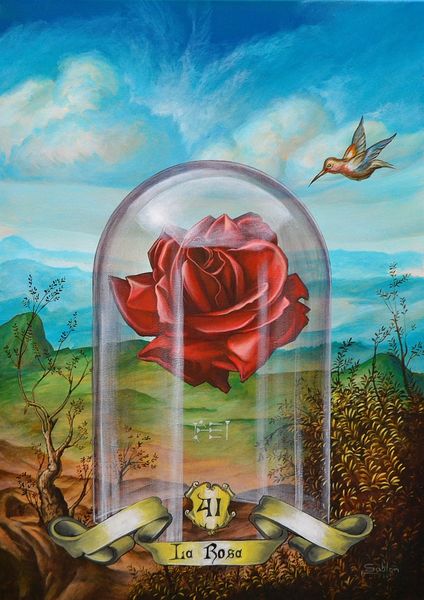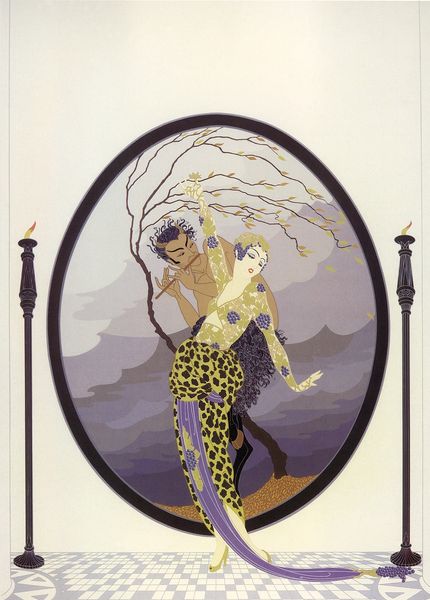
Copyright: Kit Williams,Fair Use
Curator: Looking at Kit Williams’ "Birdcage" from 1979, I am immediately struck by the contrasting textures; the smooth wood of the cage set against the delicate, almost dreamy watercolor landscape within. It feels…enclosed, yet fantastical. Editor: Absolutely. Williams, who is best known for his fairytale-like book *Masquerade*, often blends mediums in order to draw a contrast between human artifice and natural splendor. Consider how the wooden cage is the very structure framing a traditional watercolor interior scene. Curator: Indeed, but it is important to focus on that contrast and see if it relates to artistic concepts about class or social production. I find it intriguing that the child inside the cage seems undisturbed, even content, amidst what appears to be a vibrant pastoral scene populated with birds. Do we see harmony, complacency, or something else? How does the wooden construction restrict movement? Editor: It could be read on a meta level: as a commentary on how our social institutions, like galleries and even the art world itself, frame and often confine the presentation and interpretation of art. Notice how he uses this wooden border as the primary focus of this "Birdcage" instead of actually using lines inside the image. It isn't just about the *representation* of freedom versus constraint; it also confronts art's contextualization. Curator: Interesting point, and this perspective can allow for other connections: Is the art that the girl represents being treated with care? Is this what museums hope happens, and perhaps even need? How can institutions truly care for art objects without fundamentally changing them? The craftsmanship is deliberate. Editor: His style invites the public into art—and more broadly, he encourages new readings and interactions with institutional frameworks. We all see what institutions decide we need to see; is art really "free" for interpretation then? Curator: Williams uses very thoughtful painting and production to convey ideas we might consider radical in a social sphere that takes them for granted, no less! The labor, materiality, and modes of display all contribute to meaning here. Editor: In the end, that's where "Birdcage" truly resonates. It pushes us to look beyond what we perceive at face value, and that act, if done critically and with care, has radical implications in how we, as both individuals and social beings, go through our day-to-day lives.
Comments
No comments
Be the first to comment and join the conversation on the ultimate creative platform.
